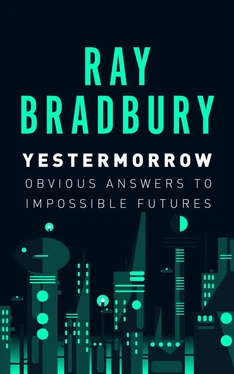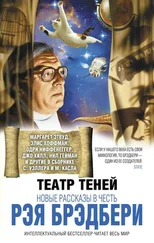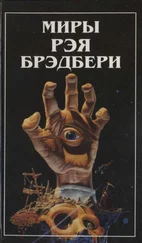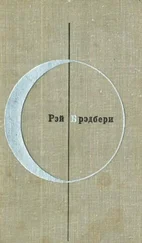The hipbone of Abraham Lincoln.
We’ll come back to the hipbone in a moment. First…
On the Bob Hope Radio Show in 1938 I heard Jerry Colonna shout as follows:
“Hello, Hope! We’re building a bridge. And starting at the top. ”
“Impossible, Colonna!”
“Alright, boys, tear it down!”
Which about describes the artists, architects, blueprinters, builders, and the dreamers of Disneyland, Disney World, and EPCOT, all located at WDI, Walt Disney Imagineering, in Glendale, California.
The gentlemen golfers who build bridges, starting at the top.
Long before I met them, I had defended their dream. Having found from meteorologists the location of the best California weather, they built near Anaheim. When Eastern critics laughed at their fantasy land that would soon sink into the earth, I fired back. My first visit to Disneyland had been with Captain Bligh, Charles Laughton, who plowed through the crowds, cresting the waves of people to take over the Jungle Ride boat and deliver me to joy. Anything, I said, that was good enough for Captain Bligh, was good enough for me.
So, the Disney gentlemen saw me coming a long time before I arrived. But, finally, how did I get to meet these master Imagineers, who painted futures in the middle of the air and then ran to build a foundation under them?
I met them through Walt Disney, who came to me gift wrapped one week before Christmas 1964. Crossing a crowded Beverly Hills department store, I saw a man bearing down on me, his chin tucked over an armload of presents.
My God, I thought, it’s my hero.
“Mr. Disney?” I asked, and told him my name.
“I know your books,” said Walt.
“Thank God,” I said.
“Why?” asked Walt.
“Because,” I said, “some day I’d like to take you to lunch.”
“Tomorrow?” asked Walt.
Not next week or next year. But—dear Lord!—tomorrow!
Before lunch the next day, Walt’s secretary warned me: “One hour, from twelve to one. Then—git!”
“Yes, ma’am,” I said and went in to sit with Walt for a lunch of soup and sandwiches served on a card table.
“Nothing has to die,” said Walt.
He said this not as prophecy but practical fact.
He was, in fact, speaking on some future blueprints for Walt Disney World, the architectural clone, one-size larger, of Disneyland. And far off in the future, EPCOT Center, in Florida.
We were commiserating with each other over the fact that in the history of nations, World’s Fairs were built one year, to be torn down the next. Dumb, stupid, ridiculous were some of the terms we tossed back and forth. Why not, we asked in our verbal badminton game, build a fair and let it stand forever? And, on occasion, tear off the wallpaper inside and repair with new fancies, notions, concepts, ideas, dreams?
At one o’clock that afternoon, I leaped to my feet, shook Walt’s hand, rushed for the door on cue. “Wait!” Walt said. “I have something to show you.”
He hustled me out the door to examine the latest robot hippo, some spare-part mock-ups for the future Pirates of the Caribbean, and the plans for a PeopleMover that could one day solve big city traffics.
Breathless, we staggered back to Walt’s office at three in the afternoon. Walt’s secretary glared at me, tapping her watch. I pointed at Walt and cried: “He did it!”
And indeed he had. If Walt saw from your face that you truly lit up about one of his wildest notions, you were lost and gone on the grand tour, always winding up at Disney Imagineering.
Disney Imagineering’s artists thrive and pomegranate-seed explode inside a nondescript Glendale building that looks as if it might house a thousand endless noon board meetings. There is no sign out front to indicate that at Christmas and Easter, here hides a madhouse of costumes and ambulatory self-wrapped gifts.
No hint that, at Halloween, Imagineering becomes a ghost manufactory, a giant Ouija board that summons up ghouls, skeletons, a mirror with a grotesque mask frozen in it that runs about telling folks they “are not the fairest of them all,” while Maleficent the Dragon inflates herself to tower above the outside parking lot.
Who are the maniacs in charge of this madhouse? John Hench, sent by Disney to study at the Sorbonne in 1939, and the nearest thing to Walt himself. Beyond eighty, John, as he chats with the inhabitants of this millrace, scribble-sketches blueprints and critters with a fine-artist’s hand.
Marty Sklar, the quietest of maniacs, keeps Imagineering off the rails but on the tracks. Hired at age twenty-one, while editor of the UCLA Daily Bruin , Marty remembers that Disney gave him—a raw, untrained reporter—a chance to edit a Disneyland newspaper the month before Disneyland opened, 33 years ago. On Walt’s behalf, he gives other young people a chance to jump off cliffs and build their wings on the way down, at Imagineering.
Between these two, Disney Imagineering has hired some fairly improbable, as I mentioned before, gentlemen golfers, to tee off mind-grenades instead of golf balls.
Item: Tony Baxter, whose career was popping popcorn at Disneyland in his spare time, built a working model of a gravity-fall train. This 3-D calling card gained him the Imagineering job of creating the Big Thunder Mountain Railroad that roars down mountain tracks at Disney’s theme parks. Its twin will soon be built at Euro-Disney, and the chief designer for this new Magic Kingdom will be… Tony Baxter.
Item: Harper Goff, lover and collector of miniature model railroads. Walt Disney and Goff met in a London railroad-model toy store and saw the glazed stare of an amateur locomotive fiend in each other’s faces. Goff wound up helping art sketch-design the Adventureland Jungle Cruise and making sure Disneyland’s locomotives ran on time.
Future item: Tom Scherman. The young man who was so enamored of Jules Verne that he secretly converted his Hollywood apartment into a clone of Captain Nemo’s 20,000 Leagues Under the Sea submarine with portholes, periscope, and seashell telephones. His landlady, unaware of the transformation, blundered into the apartment one day and, stunned, threw Scherman out and dismantled the submarine. Scherman wound up with Disney Imagineering, building Nautilus submersibles and dreaming up The Jules Verne Discovery World.
And so it went and so it goes.
Sklar and Hench, then, are curators of a vast and vital storage hall of history, a living museum, a World’s Fair unto itself.
In sum, the Renaissance did not die, it just hid out at Imagineering Inc. You need but ask for Sleeping Beauty’s castle, the turrets of Pierrefonds, Mad Ludwig’s towers, or touches of Vaux Le Vecomte. So summoned, they will sprout in a Glendale back lot to be truck-transited down freeways to Anaheim, Orlando or across the ocean airs to Japan.
Let me recount a telephone episode of a few years back.
An editor for the French magazine Nouvel Observateur called from Paris. “Monsieur Bradbury,” she said, “it has been announced, Disneyland comes to France. How do you feel about this? All those toys and games!”
“My dear young woman,” I said. “You don’t understand. It is not toys and games. It is France’s gift of itself to itself!”
“ What, what?” the lady cried.
“Good grief,” I said, “don’t you know how much Walt loved France and Paris and your gardens and flowers, and your twenty thousand restaurants and art museums and Carcassonne and Chantilly and Chambord and how he came to visit you year after year and looked around at the United States and said, ‘I will bring all this to my country, one way or another?’ And the gardens were planted and thousands of tables, chairs, and umbrellas were placed where visitors might sit and people-watch, and the castles arose and one was Disneyland and the other Walt Disney World.
Читать дальше











